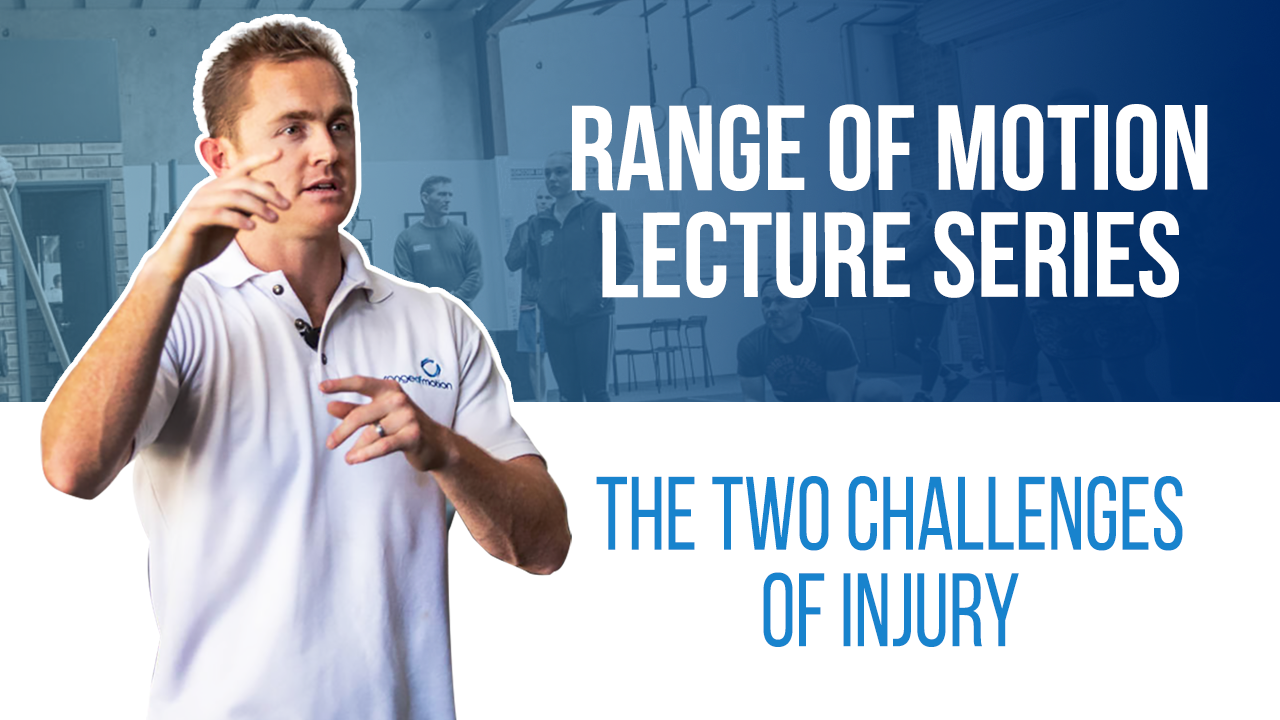Transcribed from video:
– There are two challenges that we’re facing. So you’re injured, whether it’s a little niggle or a chronic thing, or an acute injury, we have to try and fix it. So if something is broken, we need to try and fix it. Which is–it’s a given. I think that’s pretty obvious. But our second challenge, which is what I really want to talk about, to focus on today, is you need to be able to exercise, as normally as possible, irrespective, and working around that injury. An injury’s absolutely not a roadblock, just a detour. Yes, you need to divert, change directions a little bit, but we need to exercise as normally as possible, ’cause otherwise, you go bonkers, you go mad because you can’t exercise, you can’t try it, and you lose all the other associated mental and physical and psychological benefits associated with that. And also, it’s going to help to promote your recovery as well. A lot of people see injury as a death sentence, you get injured, aggravation, yeah. Most people look at this, again we talked about continuums a lot this weekend, it’s not a matter of injured, not injured. There’s a process, that rehabilitation process, in between, but then we can actually go beyond where most people perceive the end of that continuum to be. It’s not just injured, not injured, but it’s injured, not injured, a buffer between where you are and further injury. And this buffer is really important, and we can apply this to any health metric. Again, let’s look at something like blood pressure. Traditionally, 120/80 is what we say and tell people is healthy blood pressure. That’s what the government says, “Yep, that’s your norm. That’s where you want to be.” But wouldn’t it be cool to be 110/70? So if things do go wrong in life–stress, anxiety, some sort of medical problem, and then your blood pressure starts to rise, it’s rising to the point where you go yep, now we’re still good, now we’re still safe. So try and create a buffer between being “well”, which is such a, like, almost a negative, “Well,” “How are you?” “Well, I’m well.” Like, it’s not like super health, it’s not super fitness, it’s just okay, where the government asked us to be, yeah? Create a buffer between well and super health, which is where we should be aiming to sit. So let’s work on again, and as well, building this buffer here, so you’re not just injury free, but you’ve engineered your muscular-skeletal system to the point where the injury’s not going to be a problem in the future as well. Supercompensation, which you guys will remember was one of the benefits of a day load week as well.





